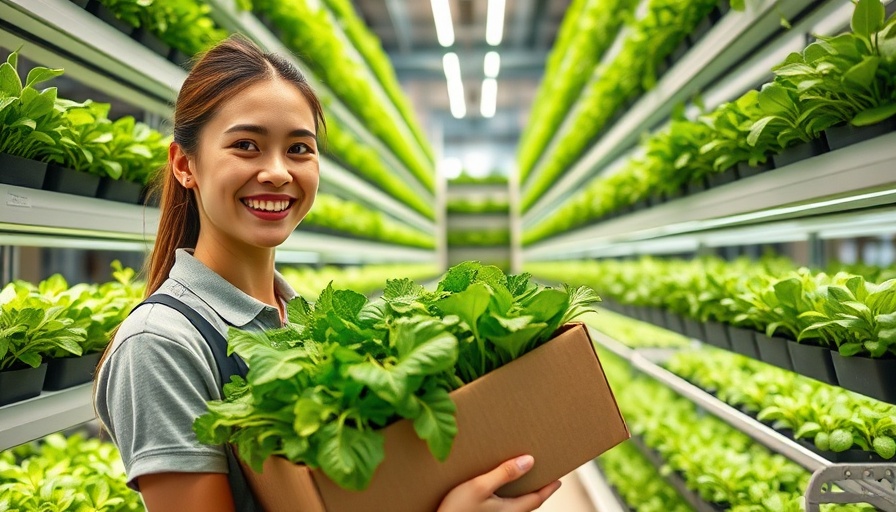
Transforming Food Production: The Rise of Vertical Farming
What if the food on your dinner table was grown in skyscrapers nearby instead of distant farms? This visionary idea is becoming a reality thanks to vertical farming, a method that’s reshaping how we think about agriculture. As urban populations swell and traditional farmland diminishes due to climate change, innovative solutions like those proposed by AeroFarms are not just desirable; they’re urgently needed.
In 'AeroFarms: Vertical Farming Revolution with AI', the discussion dives into innovative farming solutions for urban environments, inspiring a deeper analysis of how technology can reshape our food systems.
Understanding Vertical Farming: The Basics
Vertical farming is the technique of cultivating crops in vertically stacked layers, often in controlled indoor environments. This modern approach uses technologies like aeroponics, where plants are grown without soil, relying instead on nutrient-rich mist that encourages healthy root development. By consuming up to 95% less water than traditional agriculture, vertical farms present a solution to one of the most pressing environmental issues we face today.
The Role of Artificial Intelligence in Agriculture
The game-changer in vertical farming is undoubtedly artificial intelligence (AI). At AeroFarms, thousands of sensors monitor conditions such as temperature, humidity, CO2 levels, and light—all of which feed data into an AI system. This system fine-tunes growing conditions in real time, ensuring optimal growth for every plant. As a result, crops can be harvested in as little as 12 days, yielding fresh produce with enhanced flavor and nutrition—a feat that conventional farming simply can't match.
Benefits of Localized Food Production
Beyond the technological marvel, vertical farming offers significant benefits to city dwellers. With farms located in urban centers, transportation emissions are drastically reduced. Local produce is not only fresher, cutting down on time from farm to table, but it also enhances food security, making cities less reliant on far-off agricultural operations. Imagine a world where every city can sustainably feed itself—this shift could transform urban landscapes and lifestyles for the better.
The Challenges Facing Vertical Farming
While the potential of vertical farming is undeniable, hurdles remain. The energy demands for operating climate controls and supplemental lighting can be substantial, often drawing from non-renewable sources. This poses important questions about the environmental impacts of these high-tech farms. Moreover, establishing these farms comes at a high initial cost, potentially making produce more expensive than traditional crops.
Nonetheless, innovations in renewable energy solutions, such as solar panels and wind turbines, can alleviate some of these concerns, making clean energy sourcing more feasible for vertical farms.Future Innovations and Sustainability
As the technology evolves, we can envision vertical farming in repurposed buildings, underground structures, or as iconic landmarks in cities. These farms could thrive in various climates, tackling food scarcity from deserts to polar regions, while also buffering against climate-related shocks and supply chain disruptions. Vertical farming represents not just a new agricultural methodology, but a holistic rethinking of our relationship to food and its sources.
What This Means for the Future of Food
The journey of vertical farming is still in its infancy, marked with challenges but abundant with opportunities. While it cannot replace traditional agriculture, it serves as a crucial supplement as we strive for a more sustainable future. As these innovative solutions gain traction, they invite a broader dialogue about how we can feed the world's growing population responsibly and efficiently.
Imagine biting into a crisp, flavorful leaf of lettuce that was grown right in your city, powered by data and light rather than chemicals and long supply chains. That future is closer than we think.
In summary, vertical farming represents an exciting leap into a sustainable agricultural future, driven by cutting-edge technology and an emphasis on local produce. As we support indoor farms and their initiatives, we encourage a brighter future for food production—one that is both intelligent and environmentally conscious.
 Add Row
Add Row  Add
Add 






Write A Comment